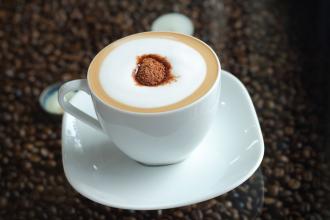Introduction of Colombian Coffee Brand in Columbia Coffee Manor
Having tasted authentic Colombian coffee, I would like to know more about the process of growing and producing coffee. In the past, because of the high incidence of various social problems, it was difficult for tourists to see pure Colombian coffee plantations for the sake of safety. In recent years, as the government has intensified its crackdown on violent organizations, more and more tourists have been able to see the coffee plantations deep in the mountains and witness the whole process of coffee production.
Colombian coffee plantations are mainly concentrated in the "Coffee Golden Triangle", that is, the triangle formed by Medellin, Armania and Manizarez. The coffee produced here accounts for the largest proportion of the national output and the best quality in Colombia.
I came to the Coffee Golden Triangle one morning. When the plane landed in Armania, the misty hills were green, and the morning light covered the green fields with golden tulle. The pick-up driver didn't wait for me to sit down before he flew to the scheduled farm. Along the way through the small towns and fields, filled with the smell of idleness, no speeding cars, no people on the road, livestock are also leisurely, aimlessly wandering, this is life in rural Colombia.
The driver told me that the "Golden Triangle" is actually a valley separated by the Andes from the Ecuadorian border into Colombia and the east-west branch. There is fertile soil formed after volcanic eruptions, with an average annual temperature of about 18 degrees Celsius and annual rainfall of 2000 to 3000 millimeters, making Colombia one of the few countries in the world that can harvest coffee all year round.
In Colombia, almost all coffee plantations are opened along the highlands of the mountains, and we drove into the mountains for a long time to reach our destination, the Agrado Coffee Farm. John, who received me, was a tall and handsome young man who was in charge of technical and management work here. He told me that the word "coffee" comes from the Greek word "Kaweh", which means "strength and passion". He said that although there is no specific record, it is now widely believed that Africa is the hometown of coffee, and when African slaves are sold to places such as Yemen and the Arabian Peninsula, coffee is taken to various places along the way. The history of coffee cultivation in Colombia can be traced back to the Spanish colonial era in the 16th century: some say it came from the island of the Caribbean and by water through El Salvador in Central America; others say that coffee beans were first introduced to Colombia by a priest from the French Antilles via Venezuela.
John took me to the shade of the manor. There, several little girls have prepared tables, chairs, utensils and other equipment, waiting for me to taste the coffee. They use different utensils to brew coffee, and let me taste it and compare it: the traditional filter paper method can taste the soft acidity of coffee; the siphon pot brewing method can more fully understand the characteristics of coffee; and the syringe pressure law squeezes out all the essence of the coffee, making it more mellow. In addition, they also showed me exquisite coffee utensils, as well as skillful coffee art such as washing and ironing cups.

Important Notice :
前街咖啡 FrontStreet Coffee has moved to new addredd:
FrontStreet Coffee Address: 315,Donghua East Road,GuangZhou
Tel:020 38364473
- Prev

Flavor and taste of Costa Rican Coffee Manor Hope Manor Costa Rican Coffee beans
In Costa Rica, there are many small-scale but high-quality coffee estates like Elsa, whose idea is to constantly improve the quality of raw coffee beans and get out of their own way of fine coffee in order to obtain the best economic benefits. Coffee is an important export product of Costa Rica, which earns a lot of foreign exchange for the country every year and is vividly called the golden seed. My unique natural conditions are very suitable.
- Next

Costa Rican Coffee Manor Fire Phoenix Manor introduction Costa Rican Coffee Manor
Located in the central valley of Costa Rica, Fenghuang Manor is the first producer in Central and South America to produce honey-treated and sun-cured coffee. It is a 100% organic coffee plantation. The manor pays great attention to the concept of environmental protection, such as collecting Rain Water to process coffee and using organic compost instead of chemical fertilizers and pesticides! What I want to share with you today is a model of this excellent manor.
Related
- Does Rose Summer choose Blue, Green or Red? Detailed explanation of Rose Summer Coffee plots and Classification in Panamanian Jade Manor
- What is the difference between the origin, producing area, processing plant, cooperative and manor of coffee beans?
- How fine does the espresso powder fit? how to grind the espresso?
- Sca coffee roasting degree color card coffee roasting degree 8 roasting color values what do you mean?
- The practice of lattes: how to make lattes at home
- Introduction to Indonesian Fine Coffee beans-- Java Coffee producing area of Indonesian Arabica Coffee
- How much will the flavor of light and medium roasted rose summer be expressed? What baking level is rose summer suitable for?
- Introduction to the characteristics of washing, sun-drying or wet-planing coffee commonly used in Mantenin, Indonesia
- Price characteristics of Arabica Coffee Bean Starbucks introduction to Manning Coffee Bean Taste producing area Variety Manor
- What is the authentic Yega flavor? What are the flavor characteristics of the really excellent Yejasuffi coffee beans?

